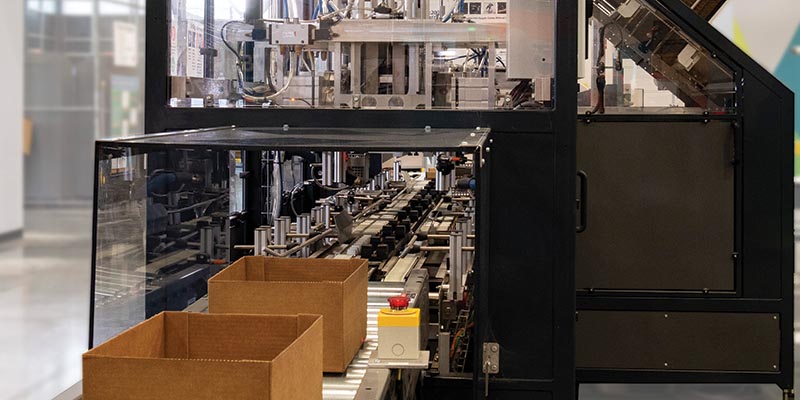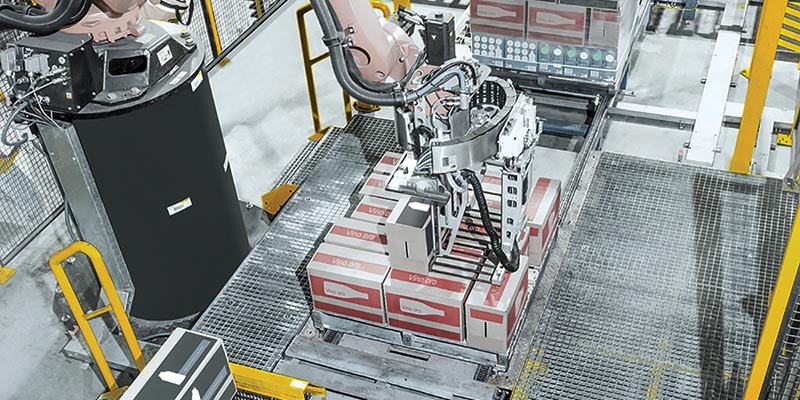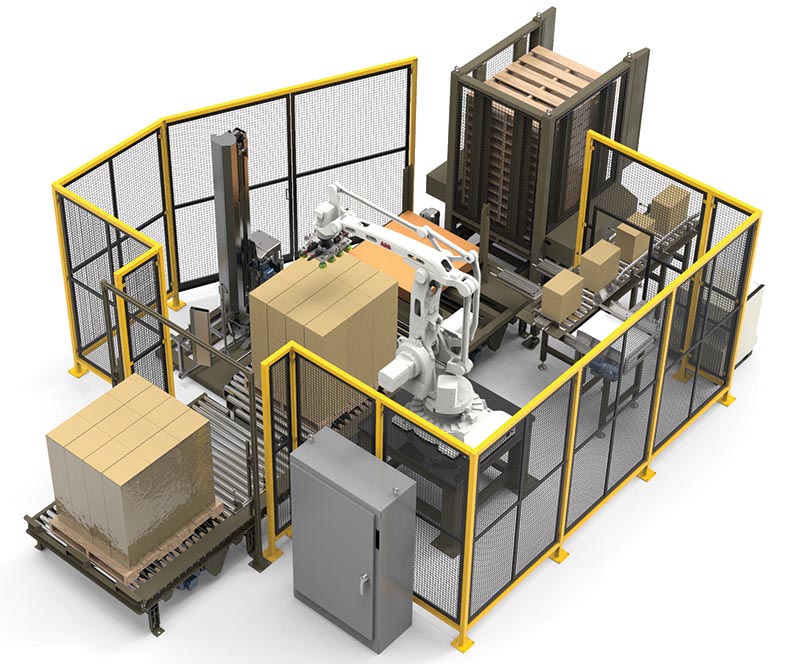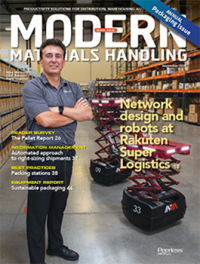The automated approach to right-sizing shipments
Traditionally, shipping boxes and cartons was an oversized process built with manual labor. Those days are disappearing with a second generation of automated machines that builds boxes and pouches that are closer to right-sized and saves on materials and shipping costs.
Almost everything in shipping packages starts with a simple box. Or, a pouch. Or, even an envelope. And then things get complicated so quickly. Consider this: You keep 15 or 20 different boxes on hand. But you ship more than 300 SKUs that actually require 70 or 80 standard box sizes.In fact, some could be shipped in an envelope or pouch, but you don’t use either. Ever.
And when you did an analysis, turns out that the vast majority of orders are shipped in oversized boxes with dunnage. In fact, the average box is 40% too big. Oh, boy. Furthermore, shipping boxes too large for their contents is expensive on the freight side. Carriers have restructured their charges to include volume as well as weight.
You don’t want to be consistently on the wrong side of that equation, explains Rick Morse, vice president of sales for Westrock. “Having the right-sized package for any given order is almost impossible while the cost implications of not using right-sized boxes are exponential,” adds Morse.
If only there were a simple answer to these and other costly issues in the packaging department. And, we haven’t even mentioned the “L word” yet. It could be time for some automation better able to match the item to the package. It certainly has an initial appeal.

Benefits of automation
Optimizing package size is only one of the problems in the shipping department. Jeff Potts, Sealed Air’s global executive director of e-commerce fulfillment, cites several other challenges that make automated packaging equipment very attractive these days. Start with the “L word”—labor.
First, you have the stress of finding people not to mention keeping them. Rising labor costs are a concern, too. Honestly, most packaging operations would be better off without armies of people erecting, taping and labeling boxes manually. Several issues are also tied to inefficiencies in the packaging department, says Potts. These range from waste (already highlighted) to order accuracy.
Caught somewhere in the middle is capacity to keep pace with orders, especially in e-commerce operations. Then you have concerns about space dedicated to packaging operations in the facility, which isn’t getting any bigger even though orders are steadily increasing. How do you get maximum efficiency from your packaging operations in those space constraints without limiting the business?
The final one, Potts explains, is the customer experience. The qualities of the shipping package do matter to customers. If nothing else, the package is the first impression. The condition of the contents upon arrival to the customer is important, too. It’s worth noting that Amazon is confronting this issue front and center.
As of last month, the e-commerce giant implemented shipping package standards for all its Marketplace products (see the story about packaging sustainability on page 44). All of this makes automation worth considering. And when it comes to rightsizing packages, you’re coming in at an early stage.
“We are in the early stages of automated equipment for shipping packages,” says Potts. “The technology is relatively new and will continue to adapt to current and future demands placed on it,” he adds. (Beyond right-sizing packages, see the box on page 34 to see what’s happening these days in one of the most established forms of automated packaging—palletizers.)
Automated palletizing gets more sophisticated
While automated palletizing has been around for some time, that hasn’t stopped suppliers from continuing to improve their offerings. Traditionally, the equipment built pallet loads of single SKUs. As product offerings exploded, pallets with mixed SKUs became more prominent. Today, palletizers build loads with mixed SKUs often in each layer, says Kevin Heath, sales engineering manager at Dematic.

But the challenge has become even more complicated, he adds. Grocery stores, in particular, not only want pallets with mixed SKUs, but they want the load built in reverse sequence to how it will be unloaded in a grocery aisle to restock shelves.
They also want stable loads despite a wide range of carton sizes. Palletizers now build shipping sequence buffers using algorithms that determine the carton sequence and how it will be stacked on the pallet. In addition, says Heath, human/machine interfaces are more intuitive for operators to use, expediting palletizing decisions.
David Blanchard, director of application engineering at SSI Schaefer, points out the end effectors that handle cartons have changed, too. Quite simply, they have become more dexterous to handle a broader range of cartons. But the big change, says Blanchard, is palletizer software. In some cases, it has actually reduced the need for certain components in the equipment. He points to Schaefer’s Pack Generator software as an example as it manages the pick and place of cartons for the pallet load.
And earlier this year, Brenton Engineering introduced the RPX-SW line of compact, affordable robotic palletizers and stretch wrappers. Clint Larson, systems controls coordinator at Brenton, says this small footprint machine is rated at up to 14 cases a minute.

Two basic configurations are available, the Build and Wrap allows for the robot to palletize right in the wrap zone. The Build then Wrap has palletizing completed in a loading zone directly before the wrap zone. Both allow for compact palletizing and stretch wrapping in one integrated cell. Looking forward, Larson expects to see operator interfaces to become even more intuitive than they are today as palletizing speeds increase, making this automated equipment even more efficient.
Right-sizing packages
The motivation to right-size packages is considerable. If each dimension of a box were reduced 20%, says Morse, 34% less corrugated would be required. Furthermore, the cube size of the box would be 49% smaller. That down-sizing goes a long way toward reducing the DIM weight (dimensional weight) as calculated by UPS, USPS, FedEx and other carriers. By the way, some of those charges increased this summer.
Meanwhile, the automated equipment here continues to improve, says Brian Reed, global vice president of product management at Packsize. “The first generation of machines certainly reduced labor from manual
shipping operations. And they were relatively reliable. But there were times when some of these Ferraris went into the shop too often,” Reed says. “The current second generation of machines features simplified mechanisms that are faster and more reliable. That’s their hallmark,” he adds.
It’s worth noting that sometimes people are still part of automated packaging systems, Reed says. “What we have now you might call augmented automation with people making some judgment calls. That said, these machines are a long way from armies of people erecting, taping and labeling boxes.”
The latest entry from Packsize is the X7. It is billed as fast, smart and reliable. This high-capacity machine can make, pack and ship a rightsized package every three seconds, pushing hourly output to 1,200 packages. It right sizes the box in all three dimensions. All functions—cut, fold, erect, glue, seal and label—are automated. The X7 requires a relatively small footprint, about 50 to 150 square feet.
Westrock’s latest entry here came by acquisition of the company Linkx Packaging Systems earlier this year. Its right-sizing machine, the Boxsizer, dynamically sizes multiple footprint boxes in any sequence. Its right-sizing technology cuts various sized boxes down to the height of the item. The width and length of the box remain the same size. Beyond measuring and cutting the box, the Boxsizer creases, folds, closes, glues and seals the box.
Since boxes are not the answer for all packaging, Westrock is in the early introductory stages of its Pak On Demand Pouch System. It is a high-speed, forming and filling system for corrugated mailing pouches operated by a single person.
Pak On Demand takes a standard 12-inch wide pouch with a 2.5-inch gusset pouch and trims it down to the appropriate length, between 8 and 20 inches. It can also handle pouches of two other widths as needed. Throughput is 650 to 700 packages an hour. Footprint of the equipment is 11 x 11 feet.
Sealed Air has also recently introduced its own non-box, right-size solution called StealthWrap. It uses a flexible parceling film that shrinks and conforms around the item, providing complete protection during transit. No over box is needed. StealthWrap is said to reduce material waste by 80%, and freight costs by 18% compared to corrugated boxes. Throughput is extremely high.
The I-Pack system, also from Sealed Air, right sizes up to 900 corrugated trays an hour. Once the tray is formed and the contents inserted, the tray is folded to create a shipping carton. Right-sizing each parcel eliminates the need for void fill and additional packaging materials.
One final new product introduction in this arena is from RanPak Automation. Evo Cut It! eliminates waste by trimming the carton to the height of the tallest item inside. Void fill can then be added before gluing the top of the box in place.
The day of shipping boxes 40% oversized may be coming to an end. Rightsized boxes and pouches assembled on automated equipment are the wave of the future.
Companies mentioned in this article

Article Topics
Packaging News & Resources
Pack Expo East has largest show to date Optimize Parcel Packing to Reduce Costs CMC Packaging Automation North America unveils Tech Center in Atlanta PACK EXPO East brings latest packaging technologies to Philadelphia Loftware’s cloud-based labeling solutions take center stage Flexcon unveils its innovative bin solutions PAC Machinery’s newest sustainable packaging options save money while increasing productivity More PackagingLatest in Materials Handling
Materials Handling Robotics: The new world of heterogeneous robotic integration Lucas Watson appointed CSO for Körber’s Parcel Logistics business in North America Hyster recognizes Dealers of Distinction for 2023 Carolina Handling names Joe Perkins as COO C-suite Interview with Keith Moore, CEO, AutoScheduler.AI: MODEX was a meeting place for innovation Walmart deploying autonomous lift trucks at four of its high-tech DCs Coles shops big for automation More Materials HandlingSubscribe to Materials Handling Magazine

Find out what the world's most innovative companies are doing to improve productivity in their plants and distribution centers.
Start your FREE subscription today.
April 2024 Modern Materials Handling

Latest Resources












